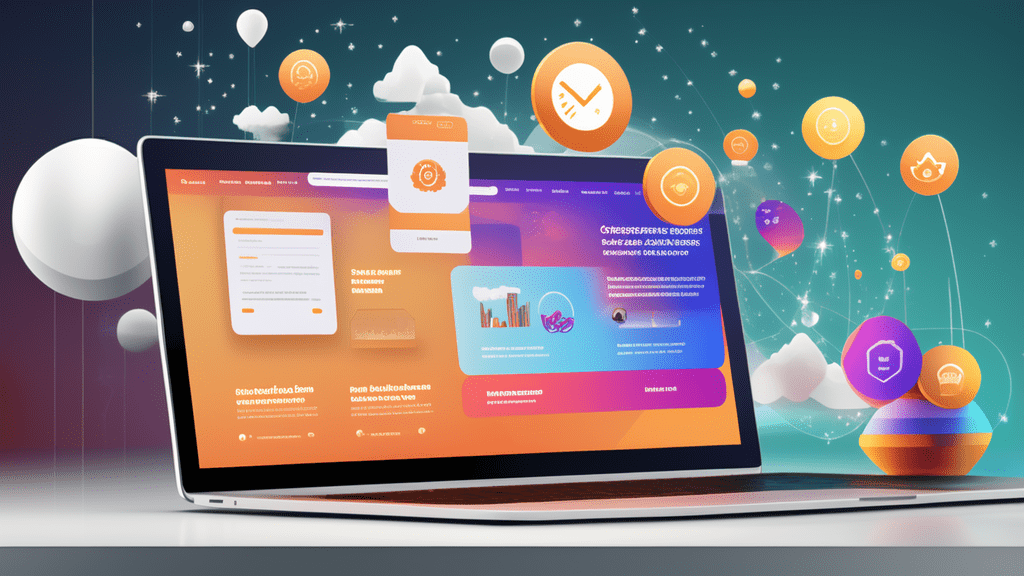
Elevating Best eCommerce Engagement Mastering Personalization for Tailored Shopping Experiences 2024

Introduction
In the dynamic world of eCommerce, delivering personalized shopping experiences has become a crucial differentiator for businesses seeking to stand out and build lasting customer relationships. Personalization leverages data driven insights to provide shoppers with relevant recommendations, content, and offers, ultimately driving higher engagement and conversions. This comprehensive guide is designed to equip you with expert insights and actionable strategies to excel in implementing eCommerce personalization for tailored shopping experiences. By understanding customer preferences, optimizing product recommendations, utilizing behavioral data, and measuring impact, you can create a customer centric eCommerce platform that captivates shoppers and drives business growth.
Table of Contents
1. Introduction to eCommerce Personalization The Power of Tailored Shopping Experiences
Understanding eCommerce Personalization
At its core, ecommerce personalization involves using data and technology to deliver tailored experiences to users. This can include personalized product recommendations, targeted promotions, personalized content and customized user interfaces that are tailored to each visitor’s preferences.
The role of data in personalization
Data serves as the backbone of eCommerce personalization. Customer data including purchase history, browsing behavior and demographic information is analyzed to gain insights into individual preferences. This data-driven approach enables ecommerce platforms to anticipate customer needs and deliver highly relevant and personalized content.
Benefits for customers
For consumers, the benefits of ecommerce personalization are profound. That means discovering products that align with their interests, receiving relevant recommendations, and enjoying a seamless and personalized shopping journey. Personalization increases user satisfaction, promotes brand loyalty, and increases the likelihood of repeat business.
Driving conversion rates and revenue
From an ecommerce business perspective, personalization is a powerful tool for driving conversion rates and revenue. By presenting customers with products they are most interested in, businesses can increase the chances of successful transactions. Additionally, targeted promotions and personalized offers contribute to a higher average order value.
Technological enablers: AI and machine learning
Advances in technology, especially artificial intelligence (AI) and machine learning (ML), play a key role in ecommerce personalization. These technologies enable platforms to analyze vast amounts of data, identify patterns, and continuously improve the accuracy of personalized recommendations over time.
Challenges and considerations
While ecommerce personalization offers numerous benefits, it comes with challenges such as data privacy concerns and the need for transparent communication with users. Striking the right balance between personalization and privacy is essential to building and maintaining customer trust.
2. Understanding the Customer Journey Navigating the Path to Personalization
Multiple touchpoints in the journey
The customer journey spans multiple touchpoints from the initial awareness stage to the final purchase decision and beyond. Each touchpoint provides valuable data and insights into customer behavior. Understanding these touchpoints enables businesses to identify key moments where personalized intervention can enhance the overall experience.
Data collection and analysis
Central to understanding the customer journey is the collection and analysis of data. Customer interactions, purchase history, website visits, and social media engagements contribute to the wealth of information. Analysis of this data highlights patterns and preferences, laying the foundation for effective personalization strategies.
Personalization at every stage
Personalization is most impactful when applied at every stage of the customer journey. Tailored content during the awareness phase, personalized recommendations during consideration and personalized promotions during the decision-making process all contribute to a seamless and engaging journey.
Predictive personalization
Advanced personalization technologies, such as predictive personalization, leverage AI and machine learning algorithms to anticipate customer needs. By predicting preferences and behaviors, businesses can proactively personalize content and recommendations, creating a more intuitive and customer-centric journey.
Responsive adaptation
The customer journey is dynamic, with customers often switching between online and offline channels. Responsive adaptation is the key to effective personalization. Businesses must ensure a consistent and personalized experience across various touchpoints, whether it’s a website, mobile app or in-store interaction.
Customer feedback loop
Integrating the customer feedback loop into the personalization strategy is critical. Actively seeking and incorporating customer feedback provides insight into the effectiveness of personalized experiences. It also allows businesses to continuously refine their personalization efforts based on real-time input.
3. Leveraging Customer Data Gathering Insights for Personalized Recommendations
Various data sources
The foundation of personalized recommendations is tapped into various data sources. This also includes customer profiles, purchase history, browsing behaviors and demographic information. By integrating information from multiple channels, businesses gain a comprehensive understanding of each customer’s preferences and habits.

Behavioral Analysis for Insights
Behavioral analytics is key to extracting meaningful insights from customer data. By studying how customers navigate websites, interact with products and respond to promotions, businesses can uncover patterns and trends. These insights form the basis of personalized recommendations that align with individual purchasing behavior.
AI and Machine Learning Algorithms
The true power of personalized recommendations emerges when businesses use AI and machine learning algorithms. These advanced technologies can analyze large datasets, identify complex patterns and predict future consumer preferences. As customers engage with the platform, these algorithms continuously learn and improve their recommendations over time.
Tailoring recommendations in real-time
Real-time personalization is a game-changer. By leveraging customer data in real-time, businesses can adjust recommendations on the fly based on immediate interactions. For example, suggesting complementary products during the browsing phase or offering special discounts based on recent purchases increases the relevance of recommendations.
4. Optimizing Product Recommendations Crafting Relevant and Compelling Offers
Understanding customer preferences
The foundation for optimizing product recommendations lies in a deep understanding of customer preferences. Analyzing past purchases, browsing behavior and demographic data provides insights into products aligned with individual interests. This knowledge forms the basis for preparing recommendations that are not only relevant but also likely to attract the customer’s interest.
Using advanced algorithms
To take recommendations to the next level, e-commerce platforms leverage advanced algorithms, often powered by artificial intelligence and machine learning. These algorithms go beyond simple correlations, analyzing complex patterns in consumer behavior to predict future choices. This predictive capability enables platforms to offer products that customers may not have considered but are likely to appreciate.
Personalization in real-time
Real-time personalization is a key aspect of optimizing product recommendations. As customers navigate the platform, real-time adjustments to recommendations based on immediate interactions enhance the shopping experience. For instance, suggesting complementary items or limited-time promotions during the browsing phase adds a dynamic and personal touch.
Strike a balance with variety
While consistency is critical, a well-optimized product recommendation strategy also balances diversity. Introducing customers to new products or variations based on their preferences contributes to a more engaging and inventive shopping journey. This approach prevents recommendations from becoming monotonous and encourages consumers to explore a wider range of offers.
5. Behavioral Targeting Anticipating Needs and Preferences for Enhanced Engagement
Anticipate needs in real-time
The essence of behavioral targeting lies in its ability to anticipate user needs in real-time. Advanced algorithms, often powered by artificial intelligence, instantly process and analyze user behavior. This allows businesses to predict preferences and dynamically present content or offers that align with the user’s current interests.
Personalized Content Delivery
Using behavioral data, businesses can personalize content delivery with precision. Tailored recommendations, targeted ads and customized communications contribute to a more engaging and relevant user experience. This personalized approach not only attracts attention but also increases the likelihood of conversion.
An adaptable and repeatable strategy
Behavioral targeting is inherently adaptable and repeatable. As user behavior evolves, targeting strategies evolve with it. Continuous analysis of behavioral data allows businesses to improve their approach, ensuring that content and offers are aligned with changing user preferences.
Balancing privacy and personalization
While behavioral targeting is a powerful engagement tool, it is important to strike a balance between personalization and user privacy. Transparent communication about data usage, strong security measures and giving users control over their choices contribute to an ethical and trusting relationship.
6. Personalizing Email Campaigns Tailoring Messaging for Higher Open and Click Rates
Division for precision
Personalization starts with thoughtful segmentation. By categorizing subscribers based on demographics, past interactions, and preferences, businesses can build a targeted email list. This segmentation lays the foundation for crafting messages that resonate with specific audience segments.
Dynamic content customization
The era of static email content is evolving into dynamic customization. By using recipient data, businesses can dynamically customize email content based on individual preferences. From personalized greetings to tailored product recommendations, dynamic content ensures that each email is uniquely relevant to the recipient.
Behavioral triggers for timely outreach
Integrating behavioral triggers increases the timeliness of email outreach. Tracking user actions such as website visits, abandoned carts or specific product views allows businesses to send timely and relevant emails. For example, an abandoned cart email with personalized product recommendations increases the likelihood of conversion.
Individual subject lines and preheaters
First impressions are important. Personalizing subject lines and preheaters increases the likelihood that recipients will open the email. Including the recipient’s name or referencing their preferences in these elements draws attention and encourages engagement.
Test and iterate for optimization
Optimizing personalization requires a commitment to testing and iteration. A/B testing different personalization elements, analyzing engagement metrics, and iterating based on results contributes to an ever-evolving strategy that relies on what resonates most with audiences.
Balancing personalization and privacy
Respecting user privacy is paramount. Striking the right balance between personalization and privacy includes transparent communication about data usage, providing opt-in options and ensuring users have control over their choices. Building trust is fundamental to the success of a personalized email campaign.
7. Creating Dynamic Website Experiences Tailored Content and Offers in Realtime
Real-time content customization
Dynamic content customization is the heartbeat of a personalized website experience. Using insights from visitor behavior, businesses can dynamically adjust website content to match individual preferences. This can include personalized greetings, product recommendations and content suggestions, creating a unique experience for each visitor.

Responsive offers and promotions
Real-time personalization extends to offers and promotions. By evaluating visitors’ actions in the moment, businesses can present tailored promotions that align with immediate interests. Whether it’s a limited-time discount, a special offer on viewed products, or a personalized bundle, responsive offers increase the likelihood of conversion.
AI and Machine Learning Algorithms
The integration of AI and machine learning algorithms expands the capabilities of dynamic website experiences. These advanced technologies process vast amounts of data in real-time, predict user preferences and continuously optimize content and offers. The result is a website that adapts and evolves with each visitor interaction.
Creating a seamless journey across devices
Dynamic website experiences transcend a single device. Businesses aiming for true personalization ensure a seamless journey across devices. Whether visitors access the website from a desktop, tablet or mobile device, the experience remains tailored and relevant to their preferences.
Iterative optimization based on analytics
The journey to an optimal dynamic website experience is an iterative process. Regularly analyzing analytics data, understanding the impact of real-time personalization on user engagement, and making iterative adjustments based on insights contribute to continuously improving and fine-tuning the website experience.
8. Utilizing Geolocation and Contextual Personalization Enhancing Relevance
Geolocation as a personalization tool
Geolocation technology enables businesses to determine the physical location of users. When integrated with a personalization strategy, this information becomes a powerful tool for delivering geographically relevant content, offers and information. For instance, displaying nearby store locations, regional promotions, or weather-related content enhances the user experience.
Contextual personalization for precision
Contextual personalization goes beyond location to take into account various factors such as time of day, device type and user behavior. By analyzing these contextual signals, businesses can tailor content in real-time. For example, a food delivery app can display breakfast options, which seamlessly adapt to the user’s context.
Local offers and recommendations
The marriage of geographic location and contextual personalization allows for the creation of local offers and recommendations. Users in different regions or cities can receive special offers for local events or preferences. This precision not only contributes to enhanced compatibility but also to a more personalized and engaging user experience.
Enhanced user engagement and conversion
Relevance is the basis of user engagement and conversion. When users encounter content that aligns with their location, preferences and context, they are more likely to engage and convert. This strategy fosters a sense of connection between users and the brand, contributing to long-term loyalty.
Balancing privacy and personalization
When leveraging geolocation and contextual personalization, businesses must prioritize user privacy. Transparent communication about data usage, providing opt-in options and ensuring strong security measures are essential components of an ethical and trustworthy approach to personalization.
9. Implementing Personalization Across Channels Consistency in Customer Experience
Integrated customer profiles
Omni-personalization starts with the creation of unified customer profiles. By integrating data from various channels, including websites, mobile apps, and social media, businesses gain a holistic view of customer preferences and behavior. This unified profile serves as the foundation for delivering continuous personalization.
Integrated messaging and offers
Consistency in communication is key to reinforcing brand identity. Omni-personalization ensures that messaging and offers presented to consumers are aligned across channels. Whether a customer interacts via email, social media or a physical store, messaging remains tailored and integrated to their preferences.
Seamless cross-channel transitions
Customers often transition between channels during their journey. Omni-personalization ensures a seamless experience in these transitions. For example, a product added to a shopping cart on a website should be reflected in personalized recommendations when a customer later engages via a mobile app.
Responsive adaptation to customer behavior
Customers exhibit different behaviors across different channels. Omni-personalization involves responsive adaptation to these behaviors. By analyzing customer actions across each channel, businesses can tailor personalization strategies to the platform’s unique characteristics, optimizing relevance and engagement.
Data synchronization for real-time updates
Real-time updates are important to maintain relevance. Omni-personalization relies on synchronized data that allows for immediate adjustments based on customer interactions. This synchronization ensures that any changes in preferences or behaviors are instantly reflected across all channels.
10. A/B Testing Personalization Strategies Finetuning for Optimal Performance
Understanding A/B testing in personalization
A/B testing involves presenting two or more versions (A and B) of a personalized component to different segments of the audience and analyzing which performs better. In terms of personalization, this may include variations in content, recommendations or offers.
Examination of Material Variations
A/B testing allows businesses to test different content variations that resonate most with users. This may include testing personalized product recommendations, tailored messaging or the placement of individual elements on webpages.
Offers optimized for conversions
For businesses using personalized offers, A/B testing helps identify the most effective incentives. This may include testing variations in how users are approached with different discount percentages, limited-time promotions, or personalized offers.
Analysis of user engagement metrics
A/B testing provides valuable insights into user engagement metrics. By analyzing click-through rates, conversion rates, and other key performance indicators for each variation, businesses can understand the impact of personalization on user behavior.
Iterative refinement for continuous improvement
The beauty of A/B testing lies in its iterative nature. Insights gained from each test inform continuous refinement. Businesses can iterate on successful elements, discard less effective strategies and progressively optimize their personalization approach.
Balancing personalization and relevance
When testing variations, businesses must balance personalization with consistency. Ensuring that individual elements align with the overall brand identity and user experience contributes to a consistent and believable approach.
11. Measuring Personalization Impact Analyzing Metrics and Assessing ROI
Analysis of engagement metrics
Engagement metrics form the foundation for measuring personalization effectiveness. Analyzing click-through rates, conversion rates, and time spent on individual content provides insights into how users interact with tailored experiences. A positive shift in this metric often indicates an enhanced user experience.
Conversion rate and revenue impact
One of the primary goals of personalization is to increase conversions and revenue. Measuring the impact on conversion rates and evaluating the overall revenue generated from personalized interactions provides tangible insight into the bottom-line impact of personalization strategies.
Customer retention and loyalty
Personalization plays a key role in customer retention and loyalty. Metrics related to repeat purchases, customer lifetime value and Net Promoter Score (NPS) provide insight into the long-term impact of personalized experiences on building lasting relationships with customers.
Validation of improved user experience
User experience is a qualitative aspect that can be measured by metrics such as bounce rate and session duration. Personalization aims to increase user satisfaction and reduce friction in the customer journey, and improvements in these metrics show a positive impact on the overall user experience.
ROI assessment
Measuring personalization impact results in a comprehensive ROI assessment. This involves comparing the costs associated with implementing and maintaining a personalization strategy against the tangible benefits, such as increased revenue, reduced acquisition costs, and improved customer retention.
Iterative refinement based on insights
Insights gleaned from metric analysis and ROI assessment inform an iterative refinement process. Businesses can adapt and optimize personalization strategies based on what the metrics reveal, ensuring continuous improvement and alignment with business objectives.
12. Ethical Considerations in Personalization Balancing Data Privacy and Value Creation
Transparency and informed consent
Ethical personalization starts with transparency. Clearly communicating to users how their data will be used for personalization purposes promotes trust. Providing mechanisms for informed consent ensures that users are aware of and agree to data practices, establishing a foundation of transparency and respect.
User control over personalization settings
Empowering users with control over their personalization settings is paramount. Offering options to opt in or out of personalized experiences, adjust preferences and easily manage data settings gives users a sense of agency and control over their digital interactions.
Data Security and Anonymization Practices
Ensuring strong data security measures is an ethical imperative. Personalization strategies should prioritize the protection of user data against unauthorized access. Additionally, anonymizing data whenever possible, or using aggregated and non-identifiable information, contributes to a privacy-focused approach.
Refrain from discriminatory practices
Ethical personalization requires vigilance against discriminatory practices. It is necessary to ensure that personalized content and offers are not based on sensitive characteristics such as race, gender or socioeconomic status. Fair and impartial personalization contributes to an inclusive and ethical user experience.
Continuous compliance monitoring
Given the evolving landscape of data privacy regulations, continuous compliance monitoring is crucial. Ethical personalization includes staying abreast of changes in privacy laws, adapting practices accordingly, and proactively addressing any compliance-related concerns.
Educating users on the benefits of personalization
Educating users about the benefits of personalization is part of an ethical approach. Clearly articulating how personalized experiences increase user satisfaction, save time, and deliver relevant content helps users understand the value proposition, promoting a positive perception of personalization efforts.
Conclusion
eCommerce personalization has reshaped the way customers interact with online stores, enhancing engagement and driving conversions. By following the insights shared in this guide, you’ll be well-equipped to implement personalization strategies that create tailored shopping experiences, increase customer satisfaction, and drive growth for your business. Remember that customer centric data usage, dynamic content, and ethical considerations are the cornerstones of successful personalization. As you prioritize customer insights, optimize recommendations, and analyze impact, you’ll be able to create an eCommerce platform that not only converts visitors into customers but also builds brand loyalty, fosters trust, and positions your business as a leader in delivering seamless and exceptional shopping experiences.
visit: mishitechtalks.com/ai-and-business-intelligence-driving-data-driven-decisions

2 Comments